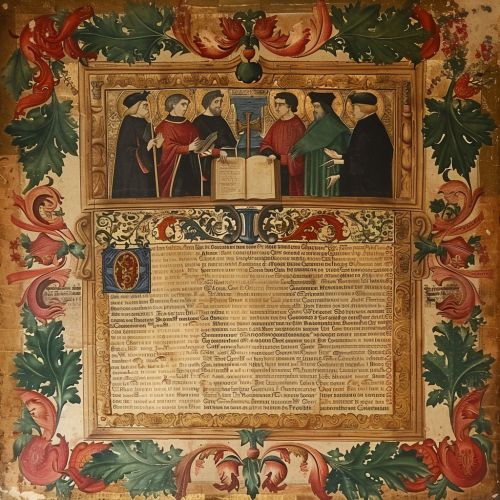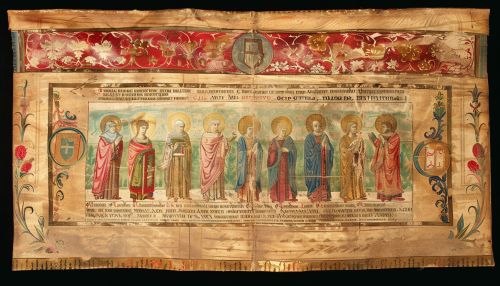Canon Law
Introduction
Canon law is a set of ordinances and regulations made by ecclesiastical authority, for the government of a Christian organization or church and its members. It is the internal ecclesiastical law, or operational policy, governing the Catholic, Eastern Orthodox, Anglican, and other Christian churches. Canon law is named from the Greek word 'kanon', meaning a 'measuring rod, rule, or norm', and is distinguished from other forms of law by its explicitly theological nature.


History of Canon Law
The history of canon law can be divided into several periods. The earliest compilations of ecclesiastical laws are collections of the decisions, or canons, of the church councils. These compilations are known as the Ancient Law and include the Didache, the Apostolic Constitutions, and the Canons of the Apostles.
Ancient Law (1st-4th Century)
The Ancient Law, dating from the first to the fourth century, is the earliest form of canon law. It includes the Didache, a brief anonymous early Christian treatise written in Koine Greek, and the Apostolic Constitutions, a Christian collection of eight treatises which belongs to genre of the Church Orders.
Codification of Canon Law (5th-12th Century)
The period from the fifth to the twelfth century saw the creation of systematic collections of canon law. During this time, the Decretum Gratiani, a collection of Canon law compiled and written in the 12th century by the Camaldolese monk Gratian, was the first codification of canon law that synthesized the rulings of previous centuries.
Corpus Juris Canonici (13th-16th Century)
The Corpus Juris Canonici, the "Body of Canon Law," was used in Catholic Church from the 13th to the 16th century. It was a compilation of ecclesiastical law that was in force until the Code of Canon Law in 1917.
Code of Canon Law (1917-Present)
The 1917 Code of Canon Law, also referred to as the Pio-Benedictine Code, was the first official comprehensive codification of Latin canon law. It was promulgated on 27 May 1917 and took legal effect on 19 May 1918. It was in force until the 1983 Code of Canon Law took legal effect and abrogated it.
Structure of Canon Law
Canon law as a legal system is composed of various components, including norms, institutes, and principles. At the core of canon law are the canons which are the laws of the church. They are followed by the decrees which are the explanations and applications of the canons. The institutes are the teachings of the church, and the principles are the basic truths upon which the rest of canon law is built.
Canons
Canons are the actual laws of the church. They are the rules that govern the church and its members. The canons are divided into two types: dogmatic canons, which deal with doctrines concerning faith and morals, and disciplinary canons, which govern the discipline of the clergy and faithful.
Decrees
Decrees are the explanations and applications of the canons. They are issued by competent authority and clarify how a canon should be applied in a particular situation.
Institutes
Institutes are the teachings of the church. They are the doctrines that are taught to the faithful to help them understand their faith and live it more fully.
Principles
Principles are the basic truths upon which the rest of canon law is built. They are the foundational beliefs of the church and guide the interpretation and application of the canons and decrees.
Canon Law in Different Christian Traditions
While all Christian traditions have some form of canon law, the content and structure of that law varies between traditions.
Catholic Church
In the Catholic Church, canon law is the system of laws and legal principles made and enforced by the hierarchical authorities to regulate its external organization and government and to order and direct the activities of Catholics toward the mission of the church.
Eastern Orthodox Church
In the Eastern Orthodox Church, canon law is a system of jurisprudence that includes the canons of the Seven Ecumenical Councils, the canons of several local or provincial councils, the canons of individual church fathers, and various church orders and other texts.
Anglican Communion
In the Anglican Communion, canon law is the body of laws and regulations made by or for the churches of the Anglican Communion, for the government of the clergy and laity.
Conclusion
Canon law, as a body of regulations, has had a profound influence on the law of countries where the Roman Catholic Church has been the state religion. It continues to be an integral part of the theological and academic tradition of not only the Roman Catholic Church, but also the Anglican Communion and Eastern Orthodox Church.
